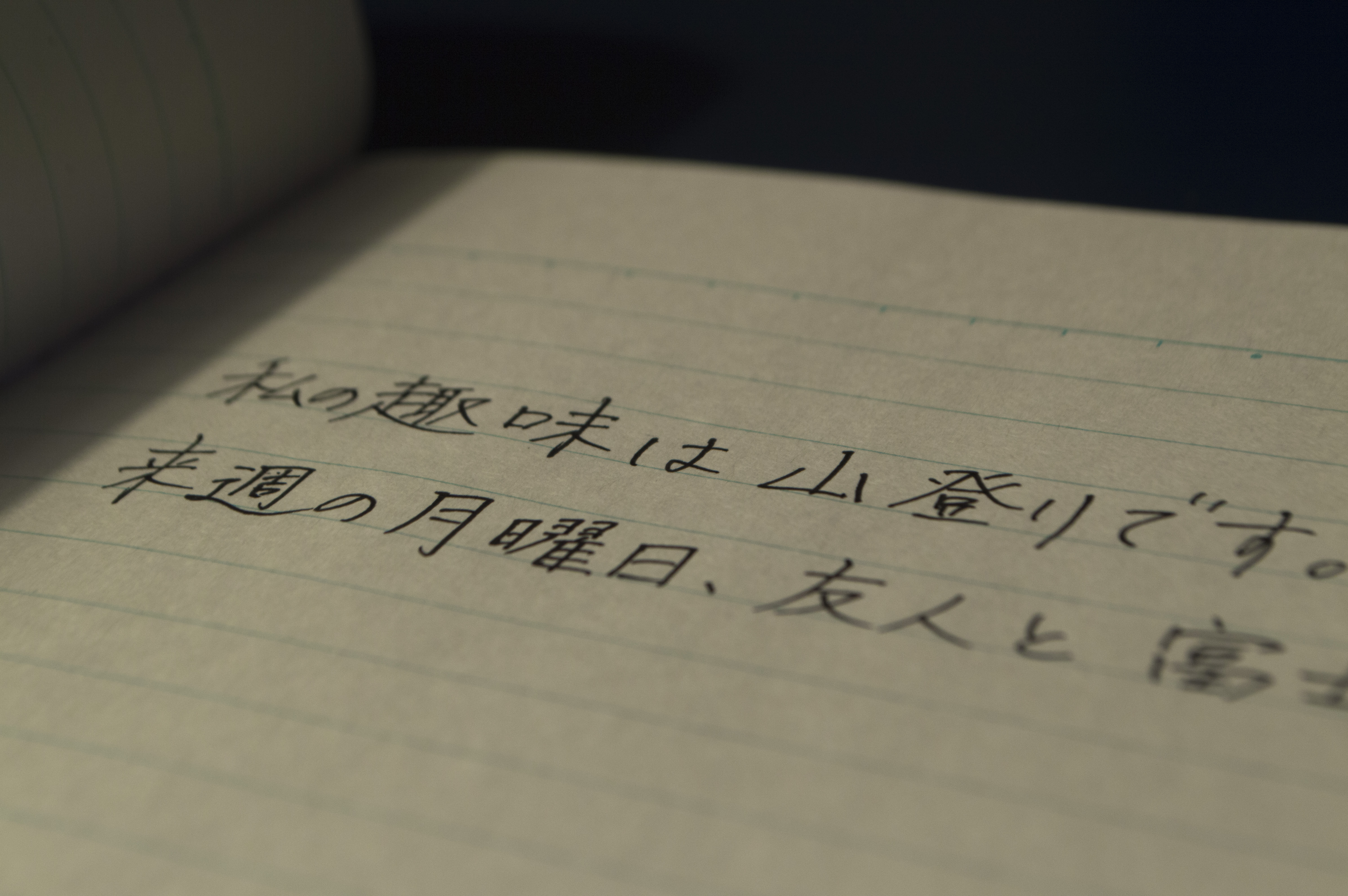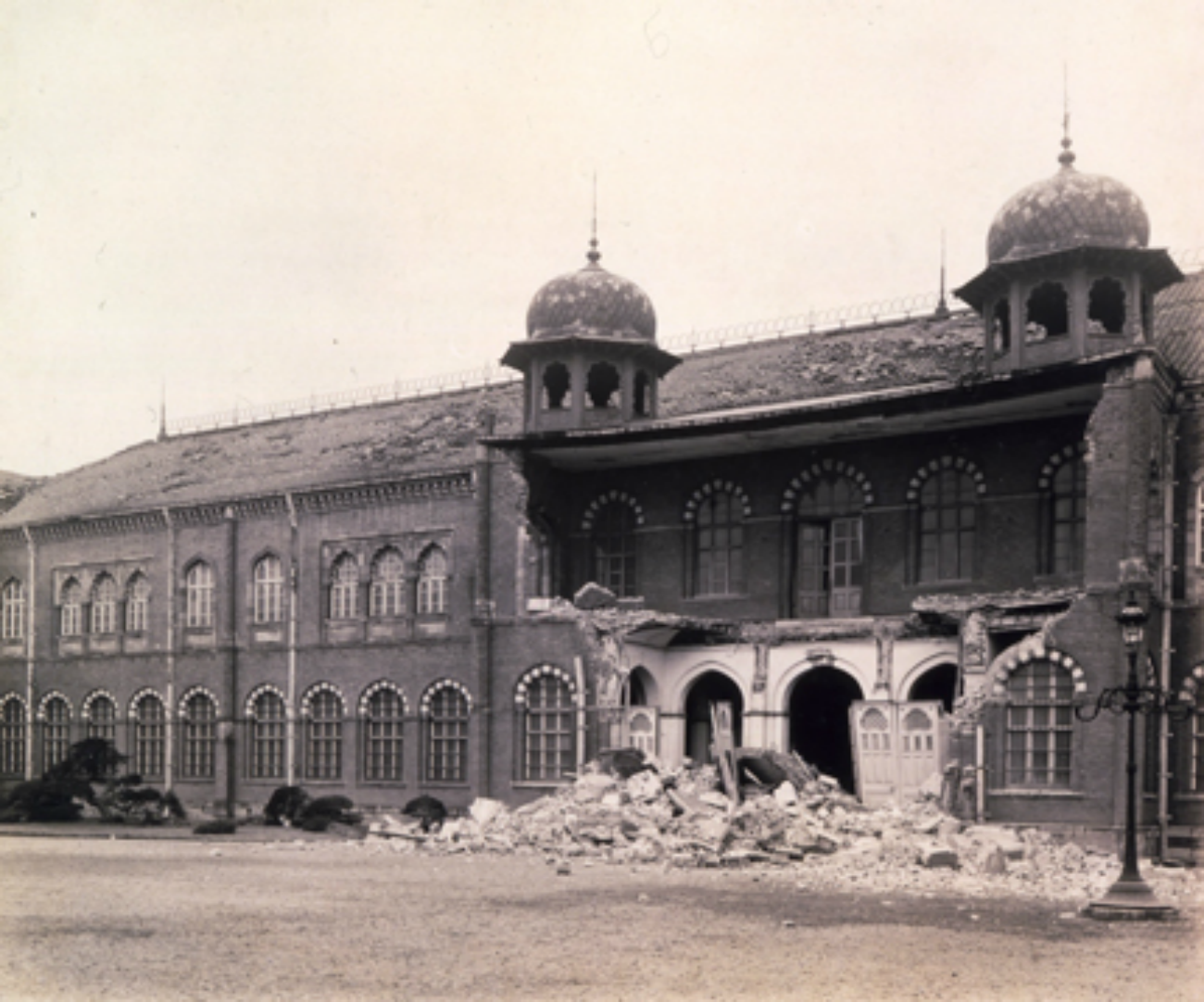|
Kaidā Glyphs
are a set of pictograms once used in the Yaeyama Islands of southwestern Japan. The word ''kaidā'' was taken from Yonaguni, and most studies on the pictographs focused on Yonaguni Island. However, there is evidence for their use in Yaeyama's other islands, most notably on Taketomi Island. They were used primarily for tax notices, thus were closely associated with the poll tax imposed on Yaeyama by Ryūkyū on Okinawa Island, which was in turn dominated by Satsuma Domain on Southern Kyushu. Etymology Sudō (1944) hypothesized that the etymology of ''kaidā'' was , which meant "government office" in Satsuma Domain. This term was borrowed by Ryūkyū on Okinawa and also by the bureaucrats of Yaeyama (''karja:'' in Modern Ishigaki). Standard Japanese /j/ regularly corresponds to /d/ in Yonaguni, and /r/ is often dropped when surrounded by vowels. This theory is in line with the primary impetus for Kaidā glyphs, taxation. History Immediately after conquering Ryūkyū, Satsu ... [...More Info...] [...Related Items...] OR: [Wikipedia] [Google] [Baidu] |
Yonaguni Symbol
, one of the Yaeyama Islands, is the westernmost island of Japan, lying from the east coast of Taiwan, between the East China Sea and the Philippine Sea. The island is administered as the town of Yonaguni, Yaeyama Gun, Okinawa, and there are three settlements: Sonai, Kubura, and Higawa. There have been discussions to establish direct ferry services with Taiwan in order to bolster tourism. Name The name ''Yonaguni'' is an exonym related to the native name ''Dunan'' in Yonaguni, with the regular sound change of ''*y-'' to ''d-'' and elision of the intervocalic ''*-g-'' in Yonaguni. The form ''yona-'' likely means "grain, rice", seen in other toponyms such as Yonabaru, hence possibly meaning "grain country". History Early human migration from Taiwan to Yonaguni island has long been the subject of scholarly debate. In 2019, a team of Japanese and Taiwanese researchers succeeded in completing the two-day journey from Cape Wushibi in Taitung County to Yonaguni island along the Kuro ... [...More Info...] [...Related Items...] OR: [Wikipedia] [Google] [Baidu] |
Meiji Period
The was an era of Japanese history that extended from October 23, 1868, to July 30, 1912. The Meiji era was the first half of the Empire of Japan, when the Japanese people moved from being an isolated feudal society at risk of colonization by Western powers to the new paradigm of a modern, industrialized nation state and emergent great power, influenced by Western scientific, technological, philosophical, political, legal, and aesthetic ideas. As a result of such wholesale adoption of radically different ideas, the changes to Japan were profound, and affected its social structure, internal politics, economy, military, and foreign relations. The period corresponded to the reign of Emperor Meiji. It was preceded by the Keiō era and was succeeded by the Taishō era, upon the accession of Emperor Taishō. The rapid modernization during the Meiji era was not without its opponents, as the rapid changes to society caused many disaffected traditionalists from the former samu ... [...More Info...] [...Related Items...] OR: [Wikipedia] [Google] [Baidu] |
Mathematical Notation
Mathematical notation consists of using glossary of mathematical symbols, symbols for representing operation (mathematics), operations, unspecified numbers, relation (mathematics), relations, and any other mathematical objects and assembling them into expression (mathematics), expressions and formulas. Mathematical notation is widely used in mathematics, science, and engineering for representing complex concepts and property (philosophy), properties in a concise, unambiguous, and accurate way. For example, the physicist Albert Einstein's formula E=mc^2 is the quantitative representation in mathematical notation of mass–energy equivalence. Mathematical notation was first introduced by François Viète at the end of the 16th century and largely expanded during the 17th and 18th centuries by René Descartes, Isaac Newton, Gottfried Wilhelm Leibniz, and overall Leonhard Euler. Symbols and typeface The use of many symbols is the basis of mathematical notation. They play a s ... [...More Info...] [...Related Items...] OR: [Wikipedia] [Google] [Baidu] |
Japanese Writing System
The modern Japanese writing system uses a combination of Logogram, logographic kanji, which are adopted Chinese characters, and Syllabary, syllabic kana. Kana itself consists of a pair of syllabary, syllabaries: hiragana, used primarily for native or naturalized Japanese words and grammatical elements; and katakana, used primarily for foreign words and names, Gairaigo, loanwords, onomatopoeia, scientific names, and sometimes for emphasis. Almost all written Japanese sentences contain a mixture of kanji and kana. Because of this mixture of scripts, in addition to a large inventory of kanji characters, the Japanese writing system is considered to be one of the most complicated currently in use. Several thousand kanji characters are in regular use, which mostly originate from traditional Chinese characters. Others made in Japan are referred to as "Japanese kanji" (), also known as "[our] country's kanji" (). Each character has an intrinsic meaning (or range of meanings), and most ... [...More Info...] [...Related Items...] OR: [Wikipedia] [Google] [Baidu] |
Writing In The Ryukyu Kingdom
The Ryukyu Kingdom (1372–1879) on Okinawa Island used various writing conventions, all of which were markedly different from spoken registers. A unique feature of Ryūkyū's writing conventions is that in the Old Ryūkyū period (?–1609), it developed a predominantly kana writing convention that was based on sōrō-style Written Japanese but exhibited heavy Okinawan language, Okinawan influence. After Invasion of Ryukyu, the conquest by Satsuma Domain in 1609, however, this style of writing was replaced by standard sōrō-style Japanese that was written predominantly with kanji. Other than that, Okinawan features were confined to the recordings of songs to sing, Poetry, poems to read aloud, and Play (theatre), plays to perform verbally, and did not have an autonomous status as literary writing. Instead, the samurai class of the kingdom was aligned with the Japanese literature, literary tradition of mainland Japan that was established during the Heian period. Predominantly ka ... [...More Info...] [...Related Items...] OR: [Wikipedia] [Google] [Baidu] |
Tadao Kawamura
Tadao (written: 忠雄, 忠夫, 忠男, 忠生, 忠郎 or 理男) is a masculine Japanese given name. Notable people with the name include: *, Japanese architect *, Japanese ''daimyō'' *, Japanese motorcycle engineer *, Japanese banker *, Japanese photographer *, Japanese footballer and manager *, Japanese screenwriter and film director *, Japanese information theorist *, Japanese inventor and engineer *, Japanese shogi player *, Japanese footballer and manager *, Japanese photographer *, Japanese anime director *Tadao Nakamura (born 1947), Japanese golfer *, Japanese mathematician *, Japanese footballer *, Japanese film critic and theorist *, Japanese musician *, Japanese astronomer and translator *, Japanese footballer *, Japanese mathematician *, Japanese photographer *Tadao Tomomatsu, American actor *, Japanese diver *, Japanese long-distance runner *, Japanese gymnast *, Japanese anthropologist *, Japanese politician *, Japanese economist and academic *, Japanese sumo and pro ... [...More Info...] [...Related Items...] OR: [Wikipedia] [Google] [Baidu] |
Basil Hall Chamberlain
Basil Hall Chamberlain (18 October 1850 – 15 February 1935) was a British academic and Japanologist. He was a professor of the Japanese language at Tokyo Imperial University and one of the foremost British Japanologists active in Japan during the late 19th century. (Others included Ernest Satow and W. G. Aston.) He also wrote some of the earliest translations of haiku into English. He is perhaps best remembered for his informal and popular one-volume encyclopedia ''Things Japanese'', which first appeared in 1890 and which he revised several times thereafter. His interests were diverse, and his works include an anthology of poetry in French. Early life Chamberlain was born in Southsea (a part of Portsmouth) on the south coast of England, the son of an Admiral William Charles Chamberlain and his wife Eliza Hall, the daughter of the travel writer Basil Hall. His younger brother was Houston Stewart Chamberlain. He was brought up speaking French as well as English, even ... [...More Info...] [...Related Items...] OR: [Wikipedia] [Google] [Baidu] |
Tokyo National Museum
The or TNM is an art museum in Ueno Park in the Taitō wards of Tokyo, ward of Tokyo, Japan. It is one of the four museums operated by the , is considered the oldest national museum and the largest art museum in Japan. The museum collects, preserves, and displays a comprehensive collection of artwork and cultural objects from Asia, with a focus on ancient and medieval Japanese art and Asian art along the Silk Road. There is also a large collection of Greco-Buddhist art. As of April 2023, the museum held approximately 120,000 Cultural Properties, including 89 National Treasure (Japan), National Treasures, 319 List of Hōryū-ji Treasures at Tokyo National Museum, Horyuji Treasures, and 649 Important Cultural Properties of Japan, Important Cultural Properties. As of the same date, the Japanese government had designated 902 works of art and crafts as National Treasures and 10,820 works of art and crafts as Important Cultural Properties, so the museum holds about 10% of the works of a ... [...More Info...] [...Related Items...] OR: [Wikipedia] [Google] [Baidu] |
Okinawa Prefecture
is the southernmost and westernmost prefecture of Japan. It consists of three main island groups—the Okinawa Islands, the Sakishima Islands, and the Daitō Islands—spread across a maritime zone approximately 1,000 kilometers east to west and 400 kilometers north to south. Despite a modest land area of 2,281 km² (880 sq mi), Okinawa’s territorial extent over surrounding seas makes its total area nearly half the combined size of Honshu, Shikoku, and Kyushu. Of its 160 Island, islands, 49 are inhabited. The largest and most populous island is Okinawa Island, which hosts the capital city, Naha, as well as major urban centers such as Okinawa (city), Okinawa, Uruma, and Urasoe, Okinawa, Urasoe. The prefecture has a subtropical climate, characterized by warm temperatures and high rainfall throughout the year. People from the Ryukyu Islands, Nansei Islands, including Okinawa Island, Okinawa, the Sakishima Islands, and parts of Kagoshima Prefecture, are often collectively referred ... [...More Info...] [...Related Items...] OR: [Wikipedia] [Google] [Baidu] |
Suzhou Numerals
The Suzhou numerals, also known as ' (), is a numeral system used in China before the introduction of Hindu numerals. The Suzhou numerals are also known as ''Soochow numerals'', ''ma‑tzu'', ' (),Wikipedia entry in Chinese 苏州码子 ' (), ' (), ' () and ' (). History The Suzhou numeral system is the only surviving variation of the rod numeral system. The rod numeral system is a positional numeral system used by the Chinese in mathematics. Suzhou numerals are a variation of the Southern Song rod numerals. Suzhou numerals were used as shorthand in number-intensive areas of commerce such as accounting and bookkeeping. At the same time, standard Chinese numerals were used in formal writing, akin to spelling out the numbers in English. Suzhou numerals were once popular in Chinese marketplaces, such as those in Hong Kong and Chinese restaurants in Malaysia before the 1990s, but they have gradually been supplanted by Hindu numerals. This is similar to what had happened in Eur ... [...More Info...] [...Related Items...] OR: [Wikipedia] [Google] [Baidu] |






